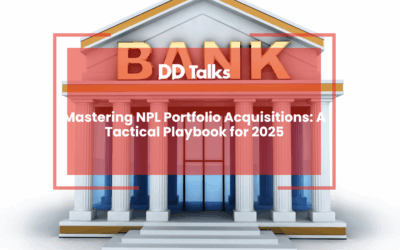Resilience in Portfolio Management
Key Takeaways
- Resilience in portfolio management helps minimize losses and capture gains across varying market conditions.
- Key strategies include diversification, asset allocation, and risk management.
- Distressed assets offer potential high returns but come with significant risks such as high volatility and liquidity issues.
- Thorough due diligence, active monitoring, and clear exit strategies are essential for managing distressed assets effectively.
Building Resilience: The Role of Distressed Assets in Portfolio Management
Table of Contents
- Understanding Resilience in Portfolio Management
- Key Strategies for Building a Resilient Investment Portfolio
- What Are Distressed Assets and How Do They Impact Portfolios?
- The Role of Asset Allocation in Enhancing Portfolio Resilience
- Benefits and Risks of Including Distressed Assets in Your Portfolio
- Market Dynamics: Creating Opportunities with Distressed Assets
- Case Studies: Successful Integration of Distressed Assets in Portfolios
- Expert Tips for Managing Distressed Asset Portfolios
Understanding Resilience in Portfolio Management
Resilience in portfolio management refers to the ability of an investment portfolio to withstand and recover from market volatility and economic downturns. A resilient portfolio minimizes losses during adverse market conditions while capturing gains during favorable periods. This involves strategically selecting assets that can perform well across various market scenarios, ensuring long-term stability and growth.
Diversification is a key component of resilience, spreading investments across different asset classes, sectors, and regions to reduce risk. Incorporating assets with low correlation to traditional markets can further enhance resilience, helping investors achieve more stable returns over time.
Key Strategies for Building a Resilient Investment Portfolio
Building a resilient investment portfolio requires diversification, asset allocation, and risk management. Key strategies include:
- Diversification: Spread investments across different asset classes such as stocks, bonds, real estate, and commodities to mitigate risk.
- Asset Allocation: Adjust the proportion of various asset classes based on market conditions and investment goals.
- Risk Management: Use techniques such as stop-loss orders and hedging to protect against significant losses.
- Regular Review: Continuously monitor and adjust the portfolio to align with changing market dynamics and personal objectives.
What Are Distressed Assets and How Do They Impact Portfolios?
Distressed assets are financial instruments or properties experiencing significant declines in value due to issues such as bankruptcy or economic hardship. These assets often trade at substantial discounts compared to their intrinsic value because they carry higher risks.
While distressed assets offer potential high returns if acquired at low prices and sold at higher values later, they come with risks including prolonged recovery periods and possible complete loss of capital.
The Role of Asset Allocation in Enhancing Portfolio Resilience
Asset allocation plays a crucial role in enhancing portfolio resilience by distributing investments across various asset categories based on an investor’s risk tolerance, time horizon, and financial goals. Proper asset allocation helps balance risk and reward, ensuring stability during volatile market conditions and achieving consistent long-term returns.
Benefits and Risks of Including Distressed Assets in Your Portfolio
Benefits:
- Diversification: Distressed assets can diversify your portfolio beyond traditional investments.
- Potential High Returns: If managed well, these assets can yield significant profits once their value recovers.
Risks:
- High Volatility: Distressed assets are prone to sharp price swings due to their inherent instability.
- Liquidity Issues: These assets may be harder to sell quickly without impacting their price.
- Prolonged Recovery: Recovery could take longer, depending on the severity of the distress.
Market Dynamics: Creating Opportunities with Distressed Assets
Market dynamics, such as economic downturns or industry-specific challenges, create opportunities with distressed assets. Investors who understand these dynamics can identify entry points into distressed assets, potentially acquiring them at discounted prices.
For example, during economic recessions, sectors like real estate may face significant pressure. Savvy investors might purchase distressed properties at low prices, renovate, and sell them for profit when the market recovers. By staying informed about market trends, investors can take advantage of these opportunities.
To learn more about non-performing loans (NPL) and distressed debt markets, visit our page on NPL & Distressed Debt Markets UK & Ireland.
Case Studies: Successful Integration of Distressed Assets in Portfolios
Real-world case studies provide insights into successful strategies for integrating distressed assets into portfolios. Below are two examples:
- An investment firm purchased commercial properties during a downturn, renovated them, and attracted high-quality tenants. As the economy recovered, property values surged, resulting in significant gains.
- Investors acquired corporate bonds from companies facing liquidity crises at deep discounts. After holding the bonds until the companies stabilized, the investors realized substantial yields through interest payments and bond appreciation.
These cases demonstrate the importance of thorough research and strategic planning when managing distressed assets.
Expert Tips for Managing Distressed Asset Portfolios
- Thorough Due Diligence: Perform comprehensive analysis to assess the true value of distressed assets before investing.
- Diversification Within Category: Spread holdings across different types of distressed assets to mitigate risks associated with any single type.
- Active Monitoring and Adjustment: Continuously monitor the performance of distressed assets and adjust strategies as market conditions change.
- Exit Strategy Planning: Develop clear exit strategies to avoid prolonged exposure and unnecessary risks.
FAQs: Resilience in Portfolio Management
1. What is resilience in portfolio management?
Resilience in portfolio management refers to the ability of a portfolio to withstand market volatility and recover from downturns, minimizing losses while capturing gains during favorable conditions.
2. How can diversification enhance a portfolio’s resilience?
Diversification spreads investments across different asset classes, sectors, and geographical regions, reducing risk. Including assets with low correlation to traditional markets can enhance resilience.
3. What are some key strategies for building a resilient investment portfolio?
- Diversification: Spread investments across various asset classes like stocks, bonds, real estate, and commodities.
- Asset Allocation: Adjust the proportion of different asset classes based on market conditions and goals.
- Risk Management: Use techniques like stop-loss orders and hedging to protect against significant losses.
- Regular Review: Continuously monitor and adjust the portfolio to stay aligned with changing market dynamics.
4. What are distressed assets, and how do they impact portfolios?
Distressed assets are financial instruments or properties that have significantly declined in value due to financial difficulties. They offer potential high returns but come with elevated risks such as liquidity issues and prolonged recovery periods.
5. What are the benefits and risks of including distressed assets in a portfolio?
Benefits:
Distressed assets can diversify a portfolio and provide high returns if their value recovers.
Risks:
They are highly volatile, may have liquidity issues, and could take longer to recover, posing a risk of complete capital loss.




0 Comments